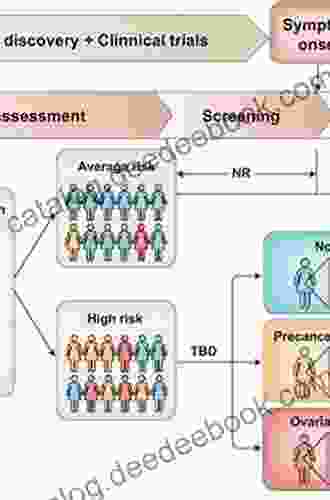A Comprehensive Guide to Neurocutaneous Disorders: Clinical Diagnostic and Therapeutic Approach

Neurocutaneous disorders are a group of rare genetic conditions that affect the nervous system and the skin. They can cause a wide range of symptoms, from mild skin lesions to severe neurological problems. The most common neurocutaneous disorders are neurofibromatosis type 1 (NF1),neurofibromatosis type 2 (NF2),and tuberous sclerosis complex (TSC).
Neurocutaneous disorders are caused by mutations in genes that are involved in the development of the nervous system and the skin. These mutations can lead to the formation of tumors, cysts, and other abnormalities in the brain, spinal cord, nerves, and skin.
5 out of 5
| Language | : | English |
| File size | : | 51530 KB |
| Text-to-Speech | : | Enabled |
| Screen Reader | : | Supported |
| Enhanced typesetting | : | Enabled |
| Print length | : | 1021 pages |
The symptoms of neurocutaneous disorders can vary depending on the type of disorder and the severity of the mutations. Some of the most common symptoms include:
* Skin lesions, such as café-au-lait spots, neurofibromas, and schwannomas * Neurological problems, such as seizures, learning disabilities, and developmental delay * Eye problems, such as cataracts and glaucoma * Heart problems, such as congenital heart defects and arrhythmias
Clinical presentation
The clinical presentation of neurocutaneous disorders can vary depending on the type of disorder and the severity of the mutations. Some of the most common clinical features include:
* Neurofibromatosis type 1 (NF1) is the most common neurocutaneous disorder. It is characterized by the presence of multiple café-au-lait spots, which are light brown patches of skin that are often present at birth. Other common features of NF1 include neurofibromas, which are benign tumors that can grow on the nerves, and schwannomas, which are benign tumors that can grow on the Schwann cells that surround the nerves. NF1 can also cause a variety of neurological problems, such as seizures, learning disabilities, and developmental delay. * Neurofibromatosis type 2 (NF2) is a less common neurocutaneous disorder. It is characterized by the presence of bilateral vestibular schwannomas, which are benign tumors that grow on the nerves that connect the inner ear to the brain. NF2 can also cause a variety of other neurological problems, such as hearing loss, tinnitus, and balance problems. * Tuberous sclerosis complex (TSC) is a rare neurocutaneous disorder. It is characterized by the presence of hamartomas, which are non-cancerous tumors that can grow in the brain, kidneys, heart, and other organs. TSC can also cause a variety of neurological problems, such as seizures, autism, and intellectual disability.
Diagnosis
The diagnosis of neurocutaneous disorders is based on a combination of clinical findings and genetic testing. A careful physical examination can often reveal the characteristic skin lesions and other physical findings associated with neurocutaneous disorders. Genetic testing can be used to confirm the diagnosis and to identify the specific genetic mutation that is responsible for the disorder.
Treatment
There is no cure for neurocutaneous disorders, but treatment can help to manage the symptoms and improve the quality of life. Treatment options may include:
* Surgery to remove tumors * Radiation therapy to shrink tumors * Chemotherapy to kill cancer cells * Medications to control seizures, pain, and other symptoms * Physical therapy to improve mobility and function * Occupational therapy to help with daily activities * Speech therapy to improve communication skills
Neurocutaneous disorders are a group of rare genetic conditions that can cause a wide range of symptoms, from mild skin lesions to severe neurological problems. The diagnosis and treatment of neurocutaneous disorders requires a multidisciplinary approach involving a variety of healthcare professionals, including dermatologists, neurologists, ophthalmologists, and geneticists. With early diagnosis and appropriate treatment, many people with neurocutaneous disorders can live full and productive lives.
5 out of 5
| Language | : | English |
| File size | : | 51530 KB |
| Text-to-Speech | : | Enabled |
| Screen Reader | : | Supported |
| Enhanced typesetting | : | Enabled |
| Print length | : | 1021 pages |
Do you want to contribute by writing guest posts on this blog?
Please contact us and send us a resume of previous articles that you have written.
 Novel
Novel Library
Library Paperback
Paperback E-book
E-book Magazine
Magazine Newspaper
Newspaper Paragraph
Paragraph Sentence
Sentence Shelf
Shelf Bibliography
Bibliography Foreword
Foreword Annotation
Annotation Footnote
Footnote Manuscript
Manuscript Scroll
Scroll Codex
Codex Tome
Tome Classics
Classics Library card
Library card Biography
Biography Autobiography
Autobiography Encyclopedia
Encyclopedia Thesaurus
Thesaurus Narrator
Narrator Librarian
Librarian Card Catalog
Card Catalog Borrowing
Borrowing Periodicals
Periodicals Research
Research Reserve
Reserve Academic
Academic Journals
Journals Rare Books
Rare Books Special Collections
Special Collections Literacy
Literacy Study Group
Study Group Awards
Awards Reading List
Reading List Theory
Theory Textbooks
Textbooks John Drennan
John Drennan Jiri Matejcek
Jiri Matejcek Brad Benefield
Brad Benefield G Michael Sanborn
G Michael Sanborn Benjamin Weingarten
Benjamin Weingarten Glenn N Levine
Glenn N Levine Michael Reit
Michael Reit Daniel M Grimley
Daniel M Grimley Pamela Conn Beall
Pamela Conn Beall Mary Southerland
Mary Southerland Kadeija Bond
Kadeija Bond Tom Thelen
Tom Thelen Stephanie S Tolan
Stephanie S Tolan James Baikie
James Baikie Willy Peter Reese
Willy Peter Reese Wolfgang Amadeus Mozart
Wolfgang Amadeus Mozart Bernie Fineman
Bernie Fineman Mark Bly
Mark Bly Alpheus J Chewning
Alpheus J Chewning Wiley Cash
Wiley Cash
Light bulbAdvertise smarter! Our strategic ad space ensures maximum exposure. Reserve your spot today!

 Charles DickensThe Oxford Handbook of Assessment Policy and Practice in Music Education...
Charles DickensThe Oxford Handbook of Assessment Policy and Practice in Music Education...
 Bryce FosterArmed Resistance In The Mississippi Freedom Movement: A Courageous Response...
Bryce FosterArmed Resistance In The Mississippi Freedom Movement: A Courageous Response... H.G. WellsFollow ·12.8k
H.G. WellsFollow ·12.8k Floyd RichardsonFollow ·14.4k
Floyd RichardsonFollow ·14.4k Kenzaburō ŌeFollow ·19.9k
Kenzaburō ŌeFollow ·19.9k Donald WardFollow ·11.6k
Donald WardFollow ·11.6k Roald DahlFollow ·16.4k
Roald DahlFollow ·16.4k Chandler WardFollow ·10.8k
Chandler WardFollow ·10.8k Cormac McCarthyFollow ·18.4k
Cormac McCarthyFollow ·18.4k Morris CarterFollow ·18.4k
Morris CarterFollow ·18.4k

 Hayden Mitchell
Hayden MitchellThe Routledge Handbook of Feminist Peace Research: A...
The Routledge...

 Joe Simmons
Joe SimmonsUnveiling the Lyrical Mastery of Henri Cole's "Blizzard...
In the realm of...

 E.E. Cummings
E.E. CummingsEast End Hardman To Tv Star: The Unlikely Rise Of Danny...
Danny Dyer is one of the...

 Eli Brooks
Eli BrooksMusic in the Tradition of Thich Nhat Hanh: A Journey of...
In the heart of...

 Samuel Ward
Samuel WardAmazing Scenes in Plastic Canvas: Bringing Your...
Plastic canvas is a...

 E.E. Cummings
E.E. CummingsA Comprehensive Guide to Non-Jazz Improvisation for...
: Embracing the Art of...
5 out of 5
| Language | : | English |
| File size | : | 51530 KB |
| Text-to-Speech | : | Enabled |
| Screen Reader | : | Supported |
| Enhanced typesetting | : | Enabled |
| Print length | : | 1021 pages |







